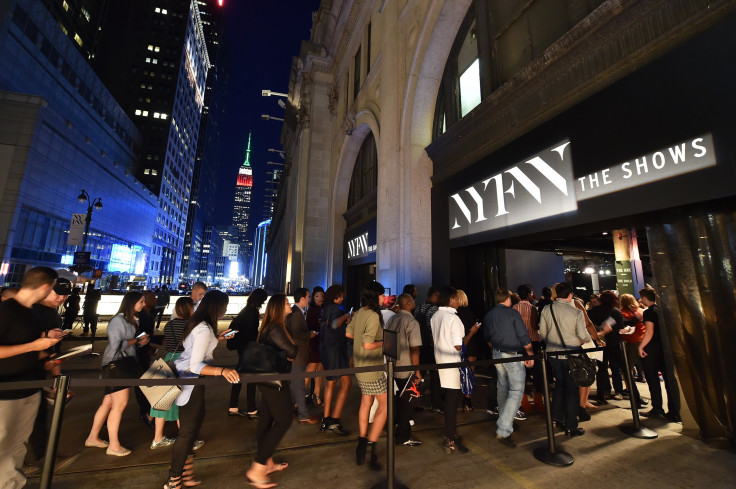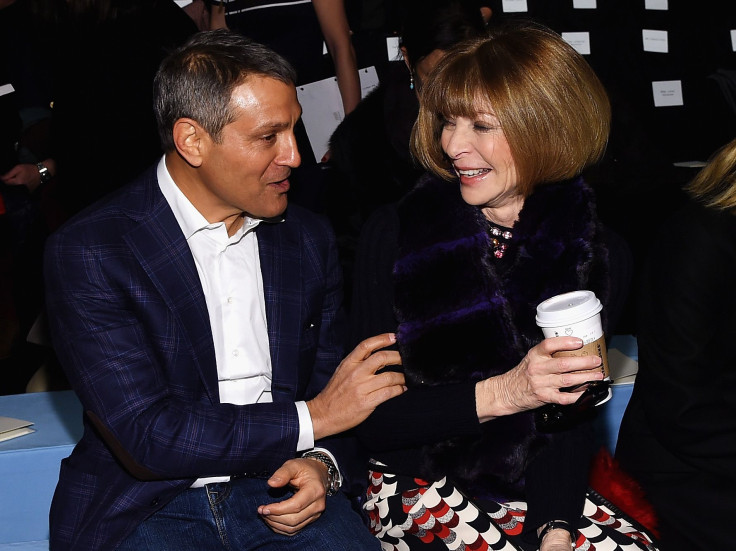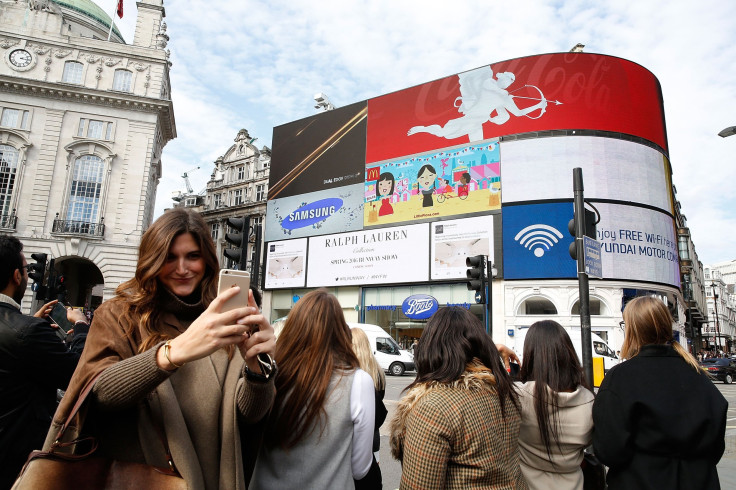As New York Fashion Week Goes Consumer, Will It Stay Useful To The Fashion Industry?

How would you like to peek backstage during New York Fashion Week? What about a front-row seat, with the same view as the glittering line of celebrities and industry icons? WME/IMG, the agency that owns and operates 13 major fashion week confabs worldwide, went a few steps further in its efforts to bring that kind of access to regular fashionistas at the just-wrapped NYFW -- to mixed reviews among industry people.
Kim Levin, a designer for PVH -- an American clothing company that owns brands such as Tommy Hilfiger and Calvin Klein -- said the increased marketing of NYFW has changed the way the week works.
"It was originally a trade show," Levin said. "Now buyers have [to make] personal appointments during market week because it's impossible to make a buy from a quick runway show -- especially with all the hoopla [surrounding it]."
"I think the theatrics of it now are good for sales and for elevating the brand," she added. "However, I do [think] that most attendees are not the [buyers] and are probably in the way of operations."
The semiannual New York Fashion Weeks have all the makings of good entertainment — elite designers, celebrities, high-profile members of press, industry moguls and, most importantly, exclusivity — so it’s only natural that the events be packaged for consumers.
WME/IMG, the global entertainment and sports management agency, acquired New York Fashion Week — NYFW, for short — in 2013, but the weeklong showcase that ran Sept. 10-17 was the first test for how a content-driven fashion week would pan out.
Download the #NYFW app to plan your schedule and get exclusive designer messages: http://t.co/Cv2YYGukFF pic.twitter.com/81xmTfpUHe
— NYFW (@nyfw) September 16, 2015Part of that effort included a new NYFW app, which was available free on the App Store and Google Play and live-streamed the runway shows, reported the New York Times. WME/IMG also added streaming-video screens on 14th Street and open hours for visitors to enter the event venues and mingle with industry leaders.
Furthermore, the agency was in negotiations with ABC Family to create a documentary following seven fashion week figures during show week, according to the Times.
By making these changes and pushing for less obvious brand partnerships, WME/IMG effectively repackaged the week. They changed the locations of the shows, the number of designers — even the name. Since 2007, the events had been called “Mercedes-Benz Fashion Week” after the German automobile-manufacturing title sponsor. This season, the formal name was “New York Fashion Week: The Shows.”
“The relocation is one step in the evolution of NYFW, which will be reintroduced as a new platform that focuses on content, caters to the needs of the industry and creates a full cultural experience for guests," IMG said in April.
The company was essentially hedging their bets that having all the shows under one major umbrella would appeal to viewers both inside and outside the industry. WME/IMG acquired their rival, MADE Fashion Week, in March as part of an effort to consolidate the massive amount of shows done during the week. Under the agreement, MADE continued to operate on its own but aligned with the agency.

According to fashion and lifestyle blogger Christina Beauchamp, who runs a blog called Fashion & Frills, that plan mostly worked. But it did add a bit of stress because of the distance between venues.
"I absolutely loved NYFW this year," she said in an email to International Business Times, "but it was difficult to make it from to show when they were oftentimes spread out across town at various venues. Having a centralized location would be much easier."
Beauchamp also weighed in on what effects -- if any -- the social media push had on her ability to blog about the shows. "There is definitely still a feeling of exclusivity to [New York] Fashion Week," she said. "I don't think broadcasting the shows online impacts that at all. I think it is a great idea, as it helps designers reach a larger audience without giving up any coveted seats."

But how did we get here?
Sports management and marketing company IMG took over NYFW in 2001, when it purchased the rights to the event from the Council of Fashion Designers of America. Under IMG’s operational leadership, NYFW affiliated with prominent sponsors and transformed into a more consumer-friendly affair, with live streams of the events beginning in 2011.
When IMG merged with William Morris Endeavor (WME), a talent and literary agency, in 2013, the new company decided to reinvent the shows. “When we look at the world, we see fashion, sports, movies, TV, books: They are all just different aspects of global entertainment consumption,” said Ariel Emanuel, a chief executive of WME/IMG, according to the Times.
NYFW is the first of what’s known as the “big 4” fashion weeks — the others being London, Paris and Milan. As such, New York served as the beta test for IMG’s new vision of what fashion week could become. If WME/IMG’s plans to integrate a home audience were successful, it is likely that similar strategies will roll out in other cities worldwide.
“We are focused on creating the best possible experiences that extend beyond a physical location and moment in time,” said Mark Shapiro, chief content officer for IMG, in an Aug. 6 statement. “We’re looking forward to reintroducing the industry to a showcase of creative talent, style and innovation that made the New York runways famous.
© Copyright IBTimes 2024. All rights reserved.






















